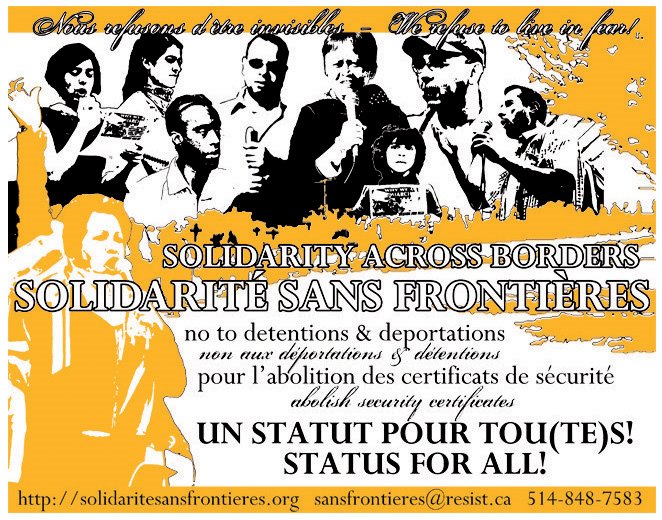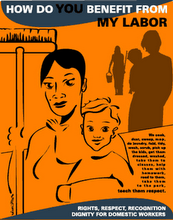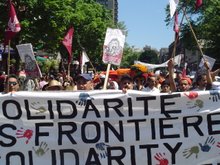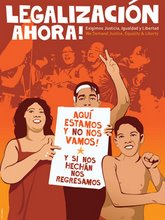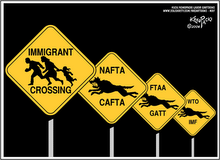The temporary foreign workers pouring into Canada are often exploited

TIMES had caught up with the sprawling brewery in the town of Barrie, an hour's drive north of Toronto. Canadians were drinking less and less beer, especially the traditional mass-produced brands. So Molson, the biggest of them all, closed the brewery and sold the property. The new owners were soon pandering to a different vice—marijuana. When police raided the plant in 2004, it was producing four crops a year of 30,000 high-grade, hydroponically-grown plants, worth around C$100m ($102m).
Along with the “pot jungles” set up in 40 mammoth brewing tanks, police found a dingy windowless dormitory and living quarters for dozens of workers. The only people charged were nine “gardeners”; the owners escaped prosecution. They may be less lucky next time. The police have launched a new investigation into a bottled-water business they are now running out of the old brewery, involving another fast-growing, but even shadier, area of Canada's economy—the exploitation of temporary foreign workers.
Among the staff at the factory, police found 11 Filipinos, lured to Canada with the promise of jobs paying up to C$23 an hour. Some sold their homes or took out loans to cover C$10,000 or more in fees demanded by labour brokers. But once in Canada, they were “sold” to unscrupulous employers, kept in an isolated rural house, and forced to do menial jobs earning—if paid at all—a fraction of what they were promised. “They were economic slaves,” said a Barrie policeman who chanced upon them: “It turned my stomach.”
The case, still unreported, is just one of a growing number of instances of abuse stemming from the dramatic rise in the use of temporary foreign workers in Canada. The increase is the result of a quiet loosening of restrictions on foreign workers by Stephen Harper's Conservative government, designed, union leaders say, to keep wages low and to avoid a national debate on the sensitive issue of immigration.
It is Canada's thriving economy that is behind the big rise in demand for foreign workers. The jobless rate has fallen to 5.8%, its lowest level in more than 30 years. In provinces such as resource-rich British Columbia and oil-soaked Alberta, the abundance of jobs has actually become a problem; tens of thousands of posts, particularly in the construction and service sectors, remain unfilled.
It is not as if Canada is not already importing foreign workers. Last year more than 250,000 came in, most of them classified as “economic immigrants”. But they are chosen on a points system which rewards university education and advanced skills. In their countries of origin, many were part of the urban elite. Three-quarters settle in Toronto, Vancouver or Montreal, where there are relatively few job vacancies. Besides, few of these highly qualified immigrants would be interested in pouring cement or coffee for a living.
Heeding the call of employers needing less qualified, lower-paid workers, the government has introduced a series of measures over the past two years designed to make the hiring of foreign workers simpler. No longer are employers obliged to place an advertisement in local newspapers for six weeks for local applicants before searching farther abroad; just one week in a federal job centre will now suffice. Instead of being allowed to stay for only one year, foreign workers are now often getting visas lasting two.
At the same time, the requirement for a “labour market opinion” (LMO) on whether a worker from outside the country is really needed has been scaled back. The federal government has launched a pilot scheme specifically aimed at bringing in low-skilled workers. And special teams of federal bureaucrats have been set up in Calgary, Vancouver and Montreal to help guide employers through the process of hiring foreign workers.
Over the two years to December 2006, these changes contributed to a jump of more than 40,000 in the number of temporary foreign workers in Canada, bringing the total to 166,000. This is sure to be dwarfed by the 2007 figures, when they are released; applications for LMOs (of which about 85% are normally granted) are already up nationally by more than a half since 2006. In Alberta they have more than tripled to over 60,000. “All of this has been allowed to happen without public debate,” Gil McGowan of the Alberta Federation of Labour says. “It was not discussed in Parliament. It was not debated in the last election campaign. It was just done, quietly.”
In the past, Canada's foreign workers have tended to fall into three categories: seasonal agricultural workers; live-in nannies and care-workers; and highly skilled specialists such as academics, entertainers and doctors. But foreign workers are now being sought, too, by small- and medium-sized businesses, particularly fast-food restaurants and hotels, which have trouble both in attracting and retaining local employees. In some of these businesses, anyone who lasts longer than three months is regarded as a “veteran”, says Dan Kelly of the Canadian Federation of Independent Business. Foreign workers are a “massive relief”, not least because they are usually tied to their employer for the duration of their visa.
But Mr McGowan and other labour leaders complain that foreign workers are “now a recruitment tool of first choice rather than last resort”. Once in Canada, they say, there is virtually no monitoring of their pay or work conditions, leaving them wide open to abuse. “Every foreign worker needs basic training in his rights and to be told that there's a place to go to if he's being abused,” says Wayne Peppard, a British Columbia labour leader. Last year his union came to the aid of several dozen Latin American construction workers, who were being paid as little as C$3.56 an hour to dig a tunnel for a rail link between Vancouver and the city airport.
Other foreign workers are both less visible and more difficult to approach. Last spring two Chinese workers were killed when an oil tank they were building in the tar-sands region of northern Alberta collapsed. Housed in a remote camp virtually without any health and safety control, they were part of a crew of 300 workers brought in by a Chinese contractor. When a second tank collapsed soon after the first, the contract was cancelled and the Chinese workers were all sent home.
The reluctance of Canada's opposition parties to pursue the foreign-worker question in Parliament is probably due to a fear of appearing to oppose immigration in a country where one in five of the population are foreign-born. It is a concern that labour leaders share. They are at pains to stress that they do not take issue with foreign workers coming into Canada; they just do not like the temporary aspect of their stay. “If these people are good enough to build our factories and serve us coffee, they're good enough to be full citizens,” Mr McGowan says.
Ottawa is promising to make it easier for temporary workers to become permanent residents, but this is likely to be limited to the more highly skilled. And Canada needs the low-skilled too.
http://www.economist.com/world/la/displaystory.cfm?story_id=10177080
